Moritaka Onitsuka
Reflex-based Motion Strategy of Musculoskeletal Humanoids under Environmental Contact Using Muscle Relaxation Control
Feb 22, 2025Abstract:The musculoskeletal humanoid can move well under environmental contact thanks to its body softness. However, there are few studies that actively make use of the environment to rest its flexible musculoskeletal body. Also, its complex musculoskeletal structure is difficult to modelize and high internal muscle tension sometimes occurs. To solve these problems, we develop a muscle relaxation control which can minimize the muscle tension by actively using the environment and inhibit useless internal muscle tension. We apply this control to some basic movements, the motion of resting the arms on the desk, and handle operation, and verify its effectiveness.
Applications of Stretch Reflex for the Upper Limb of Musculoskeletal Humanoids: Protective Behavior, Postural Stability, and Active Induction
Feb 18, 2025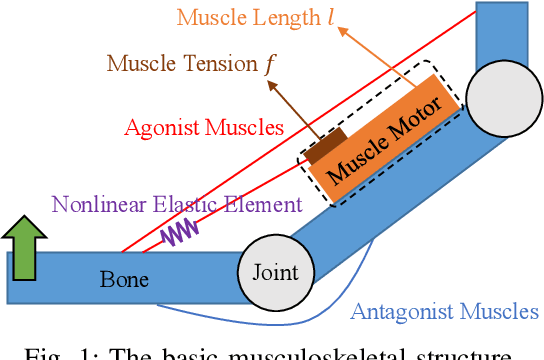
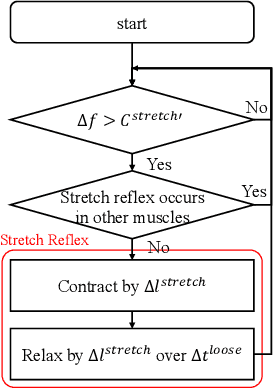
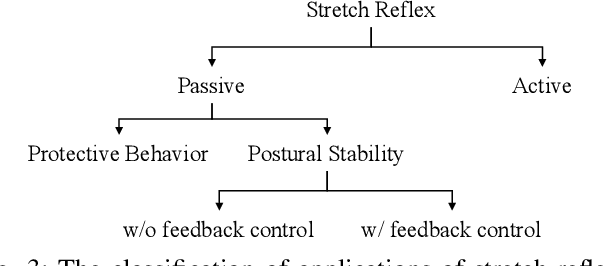
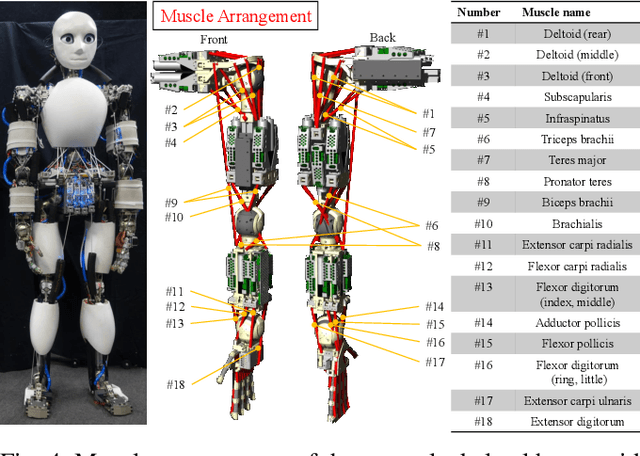
Abstract:The musculoskeletal humanoid has various biomimetic benefits, and it is important that we can embed and evaluate human reflexes in the actual robot. Although stretch reflex has been implemented in lower limbs of musculoskeletal humanoids, we apply it to the upper limb to discover its useful applications. We consider the implementation of stretch reflex in the actual robot, its active/passive applications, and the change in behavior according to the difference of parameters.
Exceeding the Maximum Speed Limit of the Joint Angle for the Redundant Tendon-driven Structures of Musculoskeletal Humanoids
Feb 18, 2025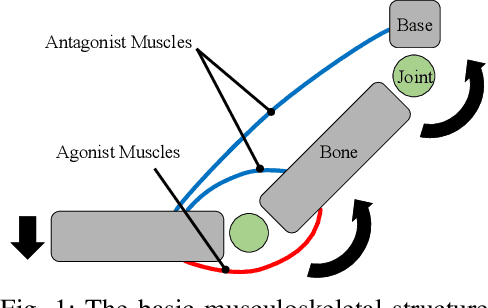
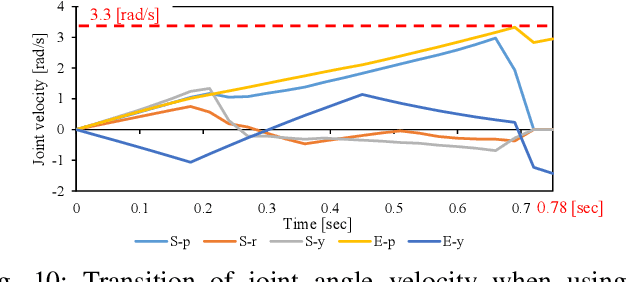
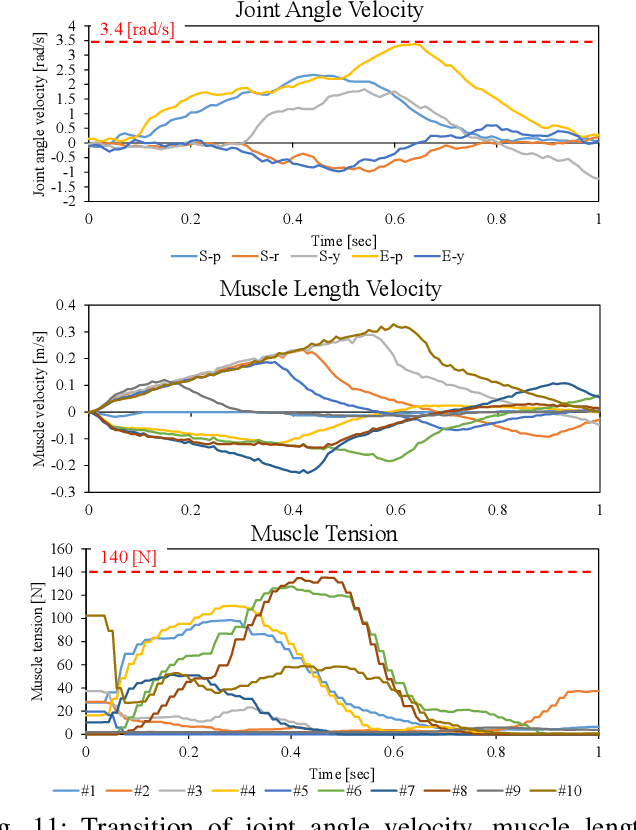
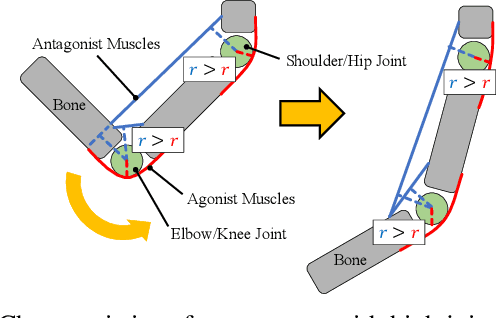
Abstract:The musculoskeletal humanoid has various biomimetic benefits, and the redundant muscle arrangement is one of its most important characteristics. This redundancy can achieve fail-safe redundant actuation and variable stiffness control. However, there is a problem that the maximum joint angle velocity is limited by the slowest muscle among the redundant muscles. In this study, we propose two methods that can exceed the limited maximum joint angle velocity, and verify the effectiveness with actual robot experiments.
Task-specific Self-body Controller Acquisition by Musculoskeletal Humanoids: Application to Pedal Control in Autonomous Driving
Dec 11, 2024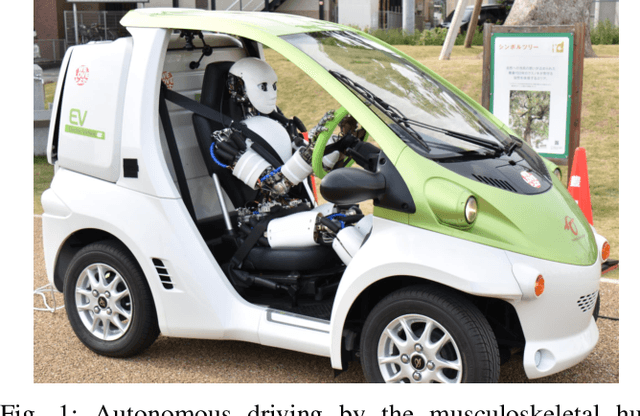
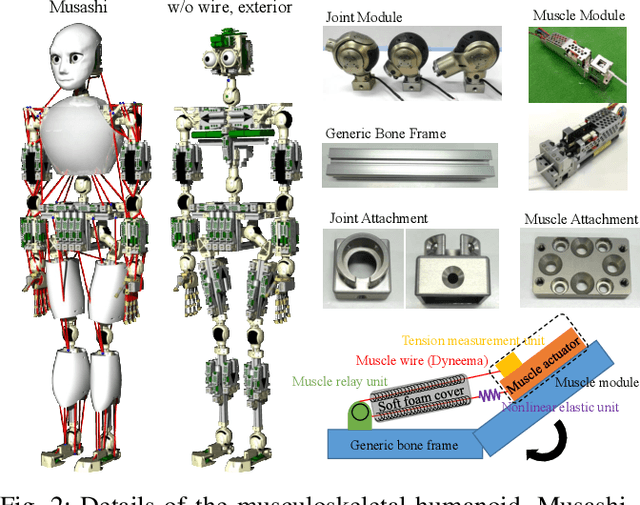
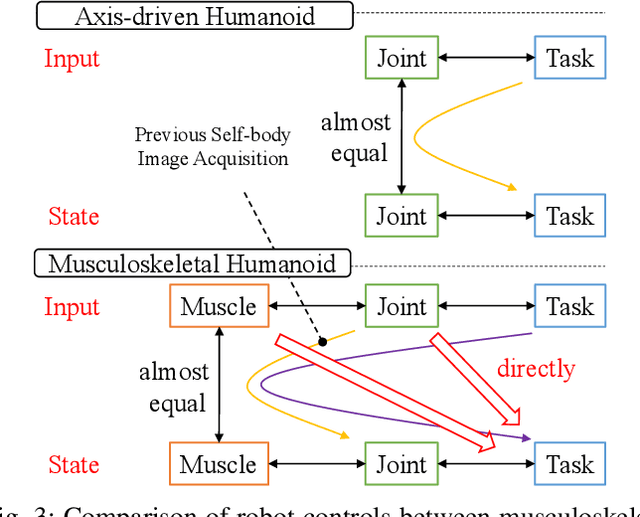
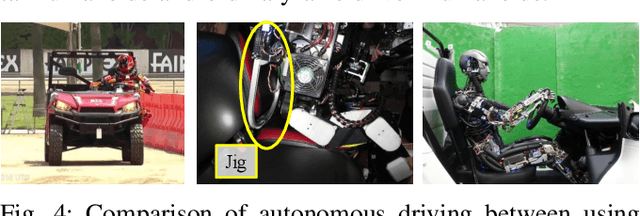
Abstract:The musculoskeletal humanoid has many benefits that human beings have, but the modeling of its complex flexible body is difficult. Although we have developed an online acquisition method of the nonlinear relationship between joints and muscles, we could not completely match the actual robot and its self-body image. When realizing a certain task, the direct relationship between the control input and task state needs to be learned. So, we construct a neural network representing the time-series relationship between the control input and task state, and realize the intended task state by applying the network to a real-time control. In this research, we conduct accelerator pedal control experiments as one application, and verify the effectiveness of this study.
Modification of muscle antagonistic relations and hand trajectory on the dynamic motion of Musculoskeletal Humanoid
Dec 01, 2024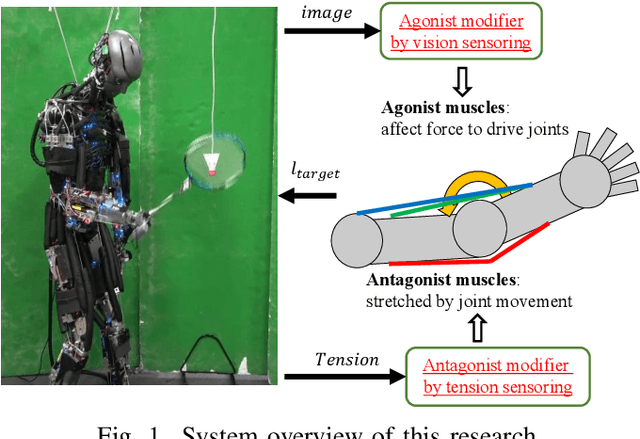
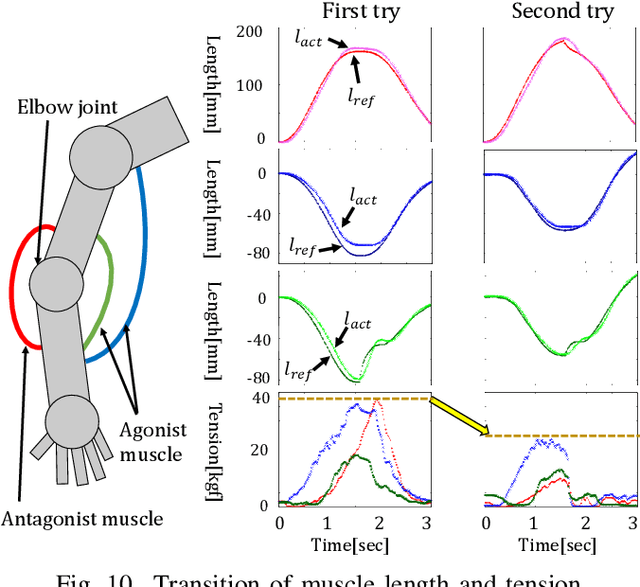
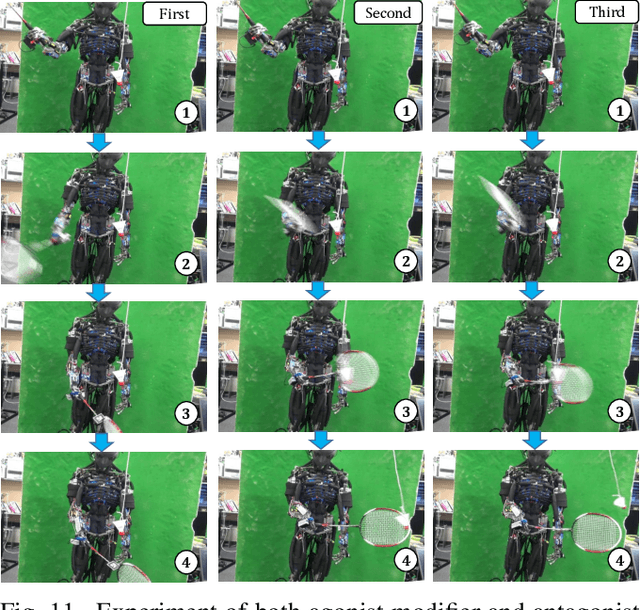
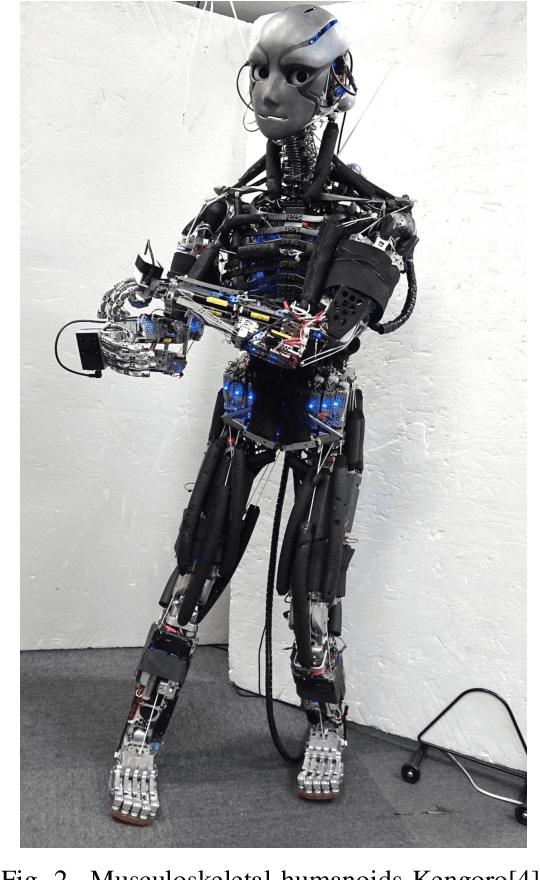
Abstract:In recent years, some research on musculoskeletal humanoids is in progress. However, there are some challenges such as unmeasurable transformation of body structure and muscle path, and difficulty in measuring own motion because of lack of joint angle sensor. In this study, we suggest two motion acquisition methods. One is a method to acquire antagonistic relations of muscles by tension sensing, and the other is a method to acquire correct hand trajectory by vision sensing. Finally, we realize badminton shuttlecock-hitting motion of Kengoro with these two acquisition methods.
Component Modularized Design of Musculoskeletal Humanoid Platform Musashi to Investigate Learning Control Systems
Oct 29, 2024Abstract:To develop Musashi as a musculoskeletal humanoid platform to investigate learning control systems, we aimed for a body with flexible musculoskeletal structure, redundant sensors, and easily reconfigurable structure. For this purpose, we develop joint modules that can directly measure joint angles, muscle modules that can realize various muscle routes, and nonlinear elastic units with soft structures, etc. Next, we develop MusashiLarm, a musculoskeletal platform composed of only joint modules, muscle modules, generic bone frames, muscle wire units, and a few attachments. Finally, we develop Musashi, a musculoskeletal humanoid platform which extends MusashiLarm to the whole body design, and conduct several basic experiments and learning control experiments to verify the effectiveness of its concept.
Estimation and Control of Motor Core Temperature with Online Learning of Thermal Model Parameters: Application to Musculoskeletal Humanoids
Jul 10, 2024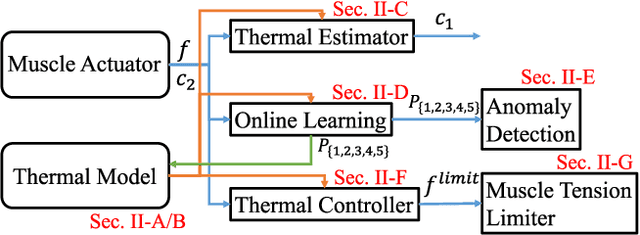
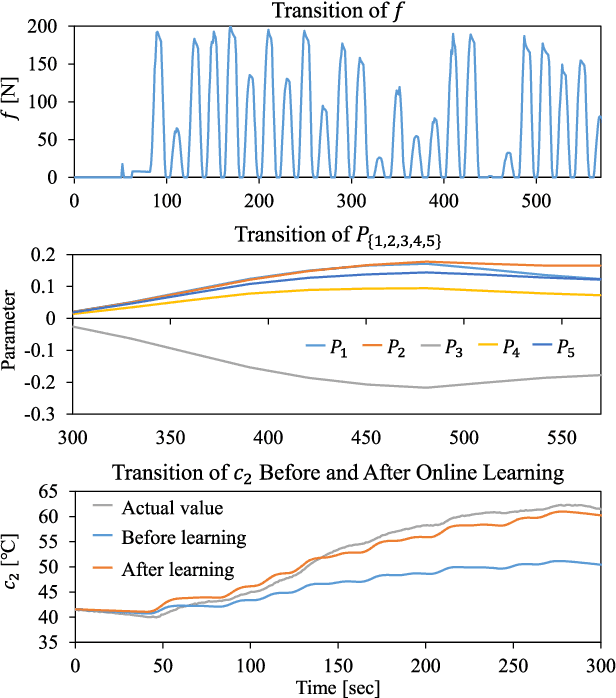
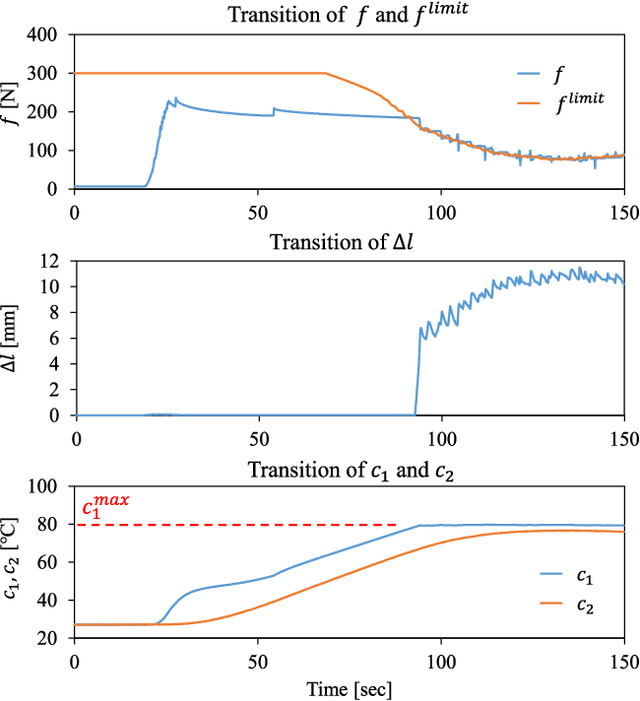

Abstract:The estimation and management of motor temperature are important for the continuous movements of robots. In this study, we propose an online learning method of thermal model parameters of motors for an accurate estimation of motor core temperature. Also, we propose a management method of motor core temperature using the updated model and anomaly detection method of motors. Finally, we apply this method to the muscles of the musculoskeletal humanoid and verify the ability of continuous movements.
Object Recognition, Dynamic Contact Simulation, Detection, and Control of the Flexible Musculoskeletal Hand Using a Recurrent Neural Network with Parametric Bias
Jul 10, 2024Abstract:The flexible musculoskeletal hand is difficult to modelize, and its model can change constantly due to deterioration over time, irreproducibility of initialization, etc. Also, for object recognition, contact detection, and contact control using the hand, it is desirable not to use a neural network trained for each task, but to use only one integrated network. Therefore, we develop a method to acquire a sensor state equation of the musculoskeletal hand using a recurrent neural network with parametric bias. By using this network, the hand can realize recognition of the grasped object, contact simulation, detection, and control, and can cope with deterioration over time, irreproducibility of initialization, etc. by updating parametric bias. We apply this study to the hand of the musculoskeletal humanoid Musashi and show its effectiveness.
Stable Tool-Use with Flexible Musculoskeletal Hands by Learning the Predictive Model of Sensor State Transition
Jun 24, 2024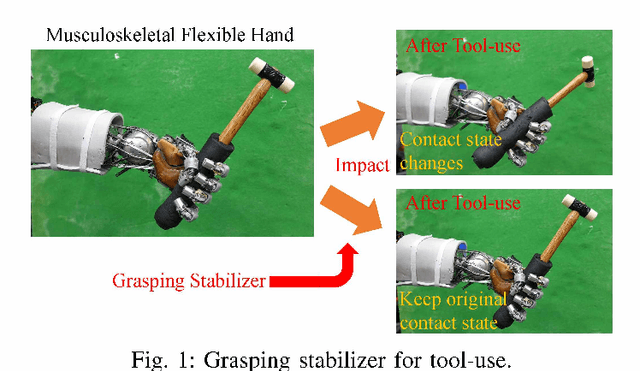

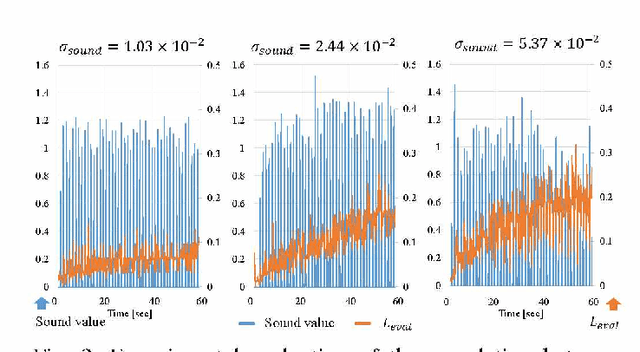
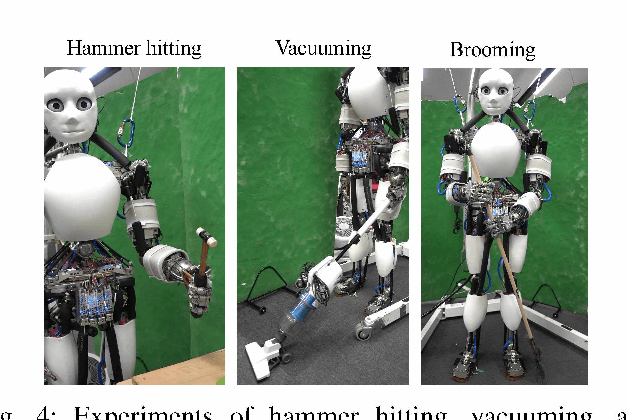
Abstract:The flexible under-actuated musculoskeletal hand is superior in its adaptability and impact resistance. On the other hand, since the relationship between sensors and actuators cannot be uniquely determined, almost all its controls are based on feedforward controls. When grasping and using a tool, the contact state of the hand gradually changes due to the inertia of the tool or impact of action, and the initial contact state is hardly kept. In this study, we propose a system that trains the predictive network of sensor state transition using the actual robot sensor information, and keeps the initial contact state by a feedback control using the network. We conduct experiments of hammer hitting, vacuuming, and brooming, and verify the effectiveness of this study.
Musculoskeletal AutoEncoder: A Unified Online Acquisition Method of Intersensory Networks for State Estimation, Control, and Simulation of Musculoskeletal Humanoids
Jun 24, 2024



Abstract:While the musculoskeletal humanoid has various biomimetic benefits, the modeling of its complex structure is difficult, and many learning-based systems have been developed so far. There are various methods, such as control methods using acquired relationships between joints and muscles represented by a data table or neural network, and state estimation methods using Extended Kalman Filter or table search. In this study, we construct a Musculoskeletal AutoEncoder representing the relationship among joint angles, muscle tensions, and muscle lengths, and propose a unified method of state estimation, control, and simulation of musculoskeletal humanoids using it. By updating the Musculoskeletal AutoEncoder online using the actual robot sensor information, we can continuously conduct more accurate state estimation, control, and simulation than before the online learning. We conducted several experiments using the musculoskeletal humanoid Musashi, and verified the effectiveness of this study.
 Add to Chrome
Add to Chrome Add to Firefox
Add to Firefox Add to Edge
Add to Edge